The 9 Most Common Software Testing Mistakes you Should Avoid
Did you know that the Pentium FDIV bug, initially a minor flaw discovered by math professor Thomas Nicely in the Pentium processor, became a huge cost for Intel due to mass hysteria? Although this rare error could have an impact on a small number of users, Intel responded by offering replacement chips to those who could prove they were affected.
The negligible impact of the bug was amplified when media coverage led to millions of people asking for new chips, which resulted in a significant cost of over $475 million for Intel.
The primary goal of software testing is to ensure that any software intended for release operates with minimal errors. Although software testers are responsible for detecting developer errors, they are also not immune to mistakes. Especially for beginners, errors are inevitable as they navigate through software testing. Here are some of the most common software testing mistakes and how to avoid them.
We can help you drive localization as a key initiative aligned to your business goals
1. Not communicating proactively
Testers must communicate effectively to convey ideas clearly to developers, test administrators, and product owners. Poor communication can result in a variety of challenges within a project:
- Lost productivity as testers spend time deciphering tasks and correcting errors due to misunderstandings.
- Flawed planning affects critical project aspects such as budgeting, estimation, and test execution.
- Strained professional relationships – which in turn can lead to incomplete or unmet project goals, decreased morale, and heightened stress, impacting team dynamics and project success.

Solution
To avoid this mistake, you can implement several strategies:
- Meet consistently between testing and development teams to discuss progress and challenges.
- Provide comprehensive bug reports with clear steps to reproduce issues, expected behavior, and observed results.
- Maintain shared documentation, such as requirements and test plans, to ensure everyone is aligned and working towards the same goals.
- Use collaborative tools and platforms to encourage communication, share updates, and track issues effectively.
2. Disregarding accessibility testing
According to the World Health Organization (WHO), around 15% of the global population, roughly one billion people, confront physical disabilities affecting their interaction with digital devices. To improve accessibility, product innovators use technologies such as screen readers, magnification, speech recognition, and special keyboards. Despite this, many websites show an average of 51.4 accessibility errors on their homepage. 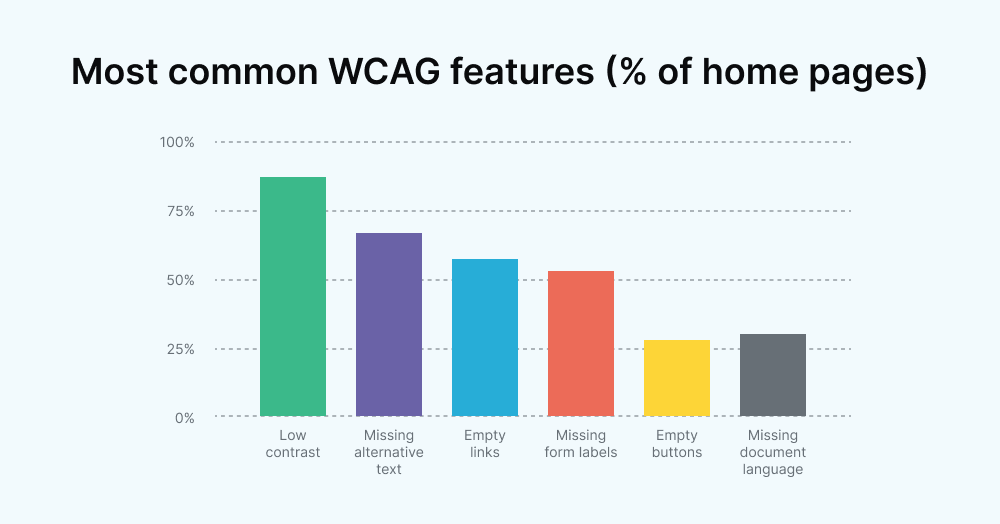
As part of usability testing, accessibility testing ensures that digital products cater to individuals with disabilities such as blindness, hearing problems, or cognitive impairments. Treating accessibility testing as a checkbox neglects inclusivity, jeopardizing user experience and potentially inviting legal repercussions.
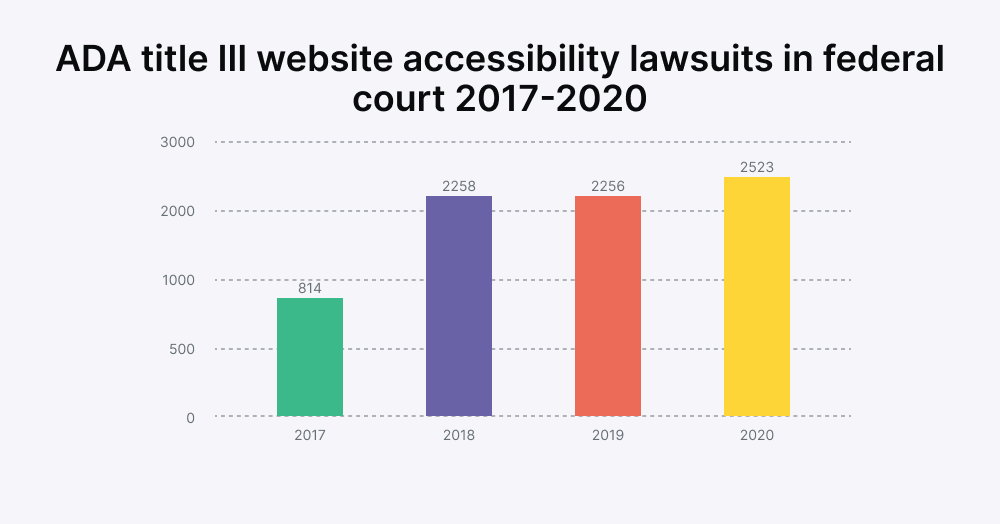
Solution
There are numerous benefits to incorporating accessibility testing:
- It ensures that a company's products or services are accessible to all users, fostering inclusivity for individuals with disabilities.
- Many countries mandate accessibility to products and services for people with disabilities, making accessibility tests crucial for legal compliance.
- Enhances audience reach by making products and services accessible to a broader customer base, potentially gaining loyal customers among people with disabilities.
- Prioritizing accessibility showcases a company's commitment to social responsibility and inclusivity, positively impacting its brand image.
Fosters innovation and creativity in product development by prioritizing accessibility, reflecting a forward-thinking approach.
Accessibility testing, whether manual or automated, should be integrated throughout the product development lifecycle (from design to implementation to deployment) to ensure universal accessibility, including individuals with disabilities.
Pro tip
Global App Testing prioritizes accessibility testing to ensure your product meets the recognized standards of the Web Content Accessibility Guidelines (WCAG).
This testing program employs WCAG-trained testers to simulate the complete spectrum of accessibility scenarios, helping your business achieve AA level.
Unlike automated tests, this approach involves real human testers and devices to cover diverse accessibility needs, ensuring a nuanced and inclusive evaluation.
3. Not defining a testing scope
One of the most common software testing mistakes is not setting clear test objectives. These objectives act as a roadmap, outlining what needs to be achieved and how to achieve it during testing. When overlooked or not given enough attention, it can lead to issues throughout the testing process.
Solution
The testing scope defines the limits of what will be tested and what won't. It encompasses the features, functions, requirements, risks, and assumptions of the software being tested.
Establishing a clear testing scope aids in concentrating on crucial aspects of the software, ensuring resources are not wasted on unnecessary or out-of-scope testing.
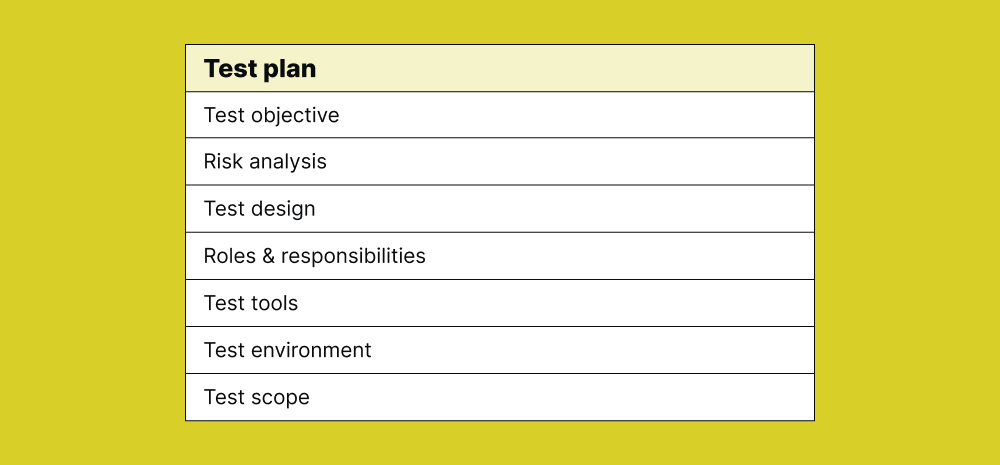
To avoid this, you should do the following:
- Work with stakeholders, developers, and team members to define and document clear test objectives.
- State objectives concisely and measurably, incorporating specific metrics when possible.
- Regularly review objectives and seek feedback from the team to ensure they align with project goals.
4. Testing with similar test data
When conducting tests with various types of test data, ensure diversity in terms of attributes of both your test environments and your test cases. Repeating the same test cases with identical input data may be suitable for regression testing. Still, it lacks value for exploratory testing, especially when seeking new issues in the product.
Solution
To assess the behavior of a product in real-world situations, you should consider a wide range of inputs that reflect actual scenarios. Repeating the same data, which is common in regression testing, can lead to the pesticide paradox. This paradox arises when new defects go unnoticed, leaving testers unaware of potential issues.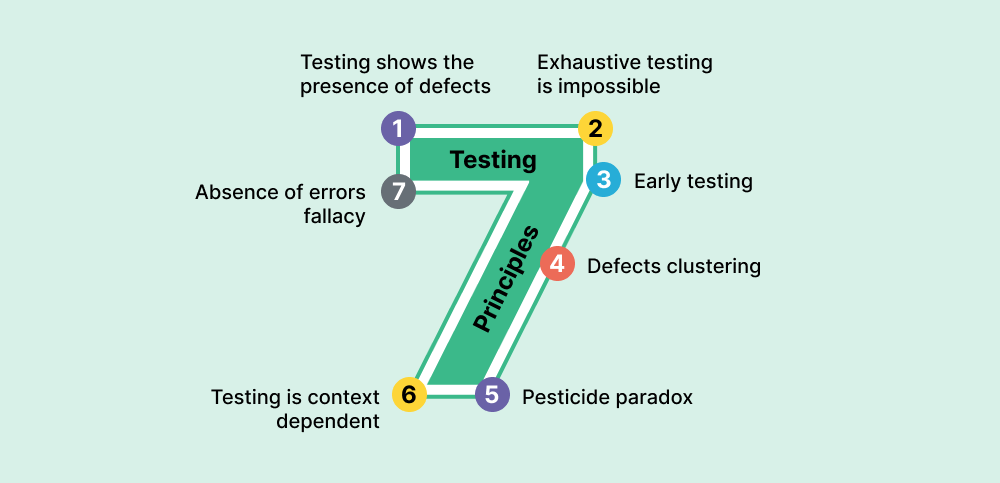
To avoid this, update testing scenarios and data regularly.
5. Lack of regression test plan
Another common software testing mistake is the lack of a regression testing plan.
Regression testing is a critical process that involves testing existing software to ensure that new development work keeps functioning features intact. It is essential to catch defects early when remediation costs are lower.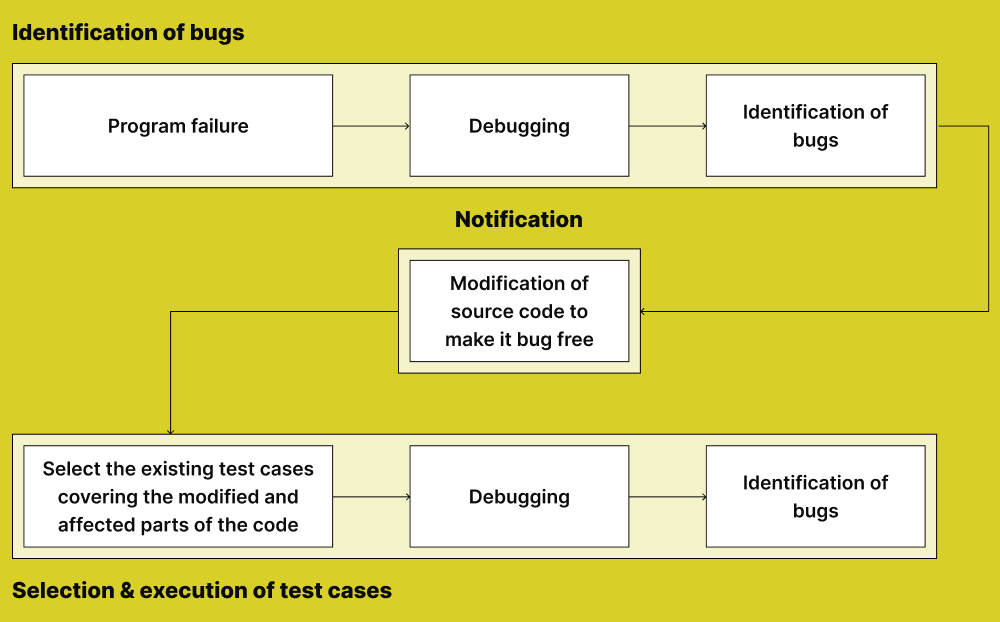
However, implementing an effective regression testing strategy faces several challenges:
- Regression testing is often considered uninteresting and lacks perceived value, leading to demoralized testers. Solutions include automation, team rotation, education on the importance of regression testing, and making metrics visible to the team and management.
- As regression testing doesn't provide immediate returns, it can be undervalued.
Address this by educating teams and managers on the long-term benefits, sharing scenarios of potential system failures, and presenting statistics on the ROI of early bug detection.
- Manual regression testing incurs ongoing workforce costs, while automation involves upfront development and tooling costs. Solutions include automation adoption, risk-based testing prioritization, and quality intelligence platforms.
- Manual or semi-manual regression testing can take days to weeks, impacting agile development cycles. Automation and optimization are vital solutions to streamline the testing process and avoid becoming a bottleneck.
- Lack of clear goals and metrics for regression testing can result in uncertainty about its impact. Define measurable goals tied to business results, quantify the ROI of early bug detection, and ensure metrics are aligned with business interests.
Consider Global App Testing
Global App Testing is a crowdtesting platform that leverages a global network of human testers to perform tests. The results are returned within 48 hours, depending on the required level of specialization. This way, you can simulate automated testing efficiency without burdening engineers with the automation process. By freeing up your QA team to focus on strategy and engineering, the platform helps businesses close their "automation gap” – our name for the queue of tests that many businesses have waiting to be automated.
6. Overlooking the significance of exploratory testing
While following an extensively checked and approved test plan is crucial, exploratory testing is vital in identifying bugs that go unrecognized in pre-written test cases.
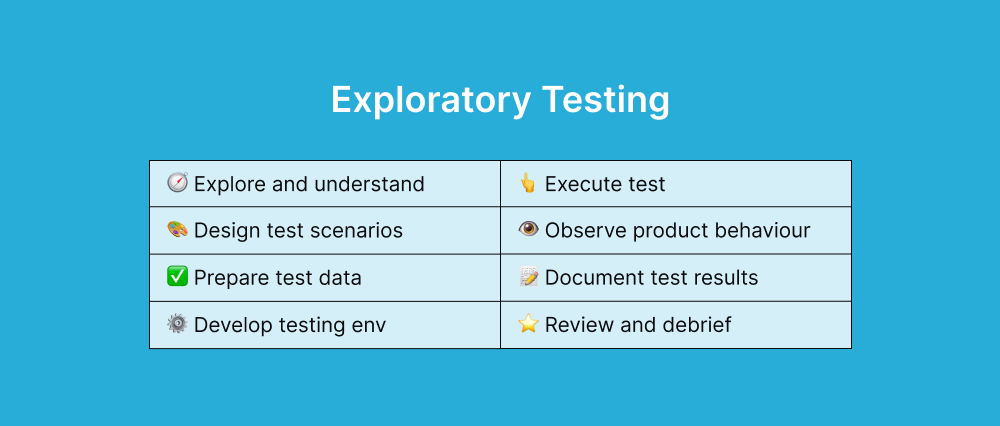
Solution
Introduce “test jam” sessions where the entire team collaboratively engages in spontaneous exploration of the product. Alternatively, incorporating external perspectives from individuals unfamiliar with the product helps uncover nuanced issues and ensures a well-rounded approach to testing, enhancing the overall quality assurance process.
Pro tip
Through our unscripted and in-depth exploration of your product, we identify high-impact bugs before they reach your users. Our elastic QA process enables on-demand testing with minimal preparation, providing flexibility in engagement. Each exploratory test involves 15–20 professional testers armed with best practices to uncover reproducible bugs within your app, mitigating concerns about cross-edge cases.
Expect detailed and insightful exploratory testing results delivered within 6-48 hours, featuring:
- Real-time reporting throughout the testing process
- Reproducible bug reports with video, screenshots, logs, and additional information
- Effortless integration with your bug tracking or project management software
7. Concentrating solely on functional testing
When functional testing is prioritized exclusively without addressing non-functional elements that contribute to high software quality, such as performance, security, and usability, the resulting software may excel in controlled environments but stutter in real-world conditions.
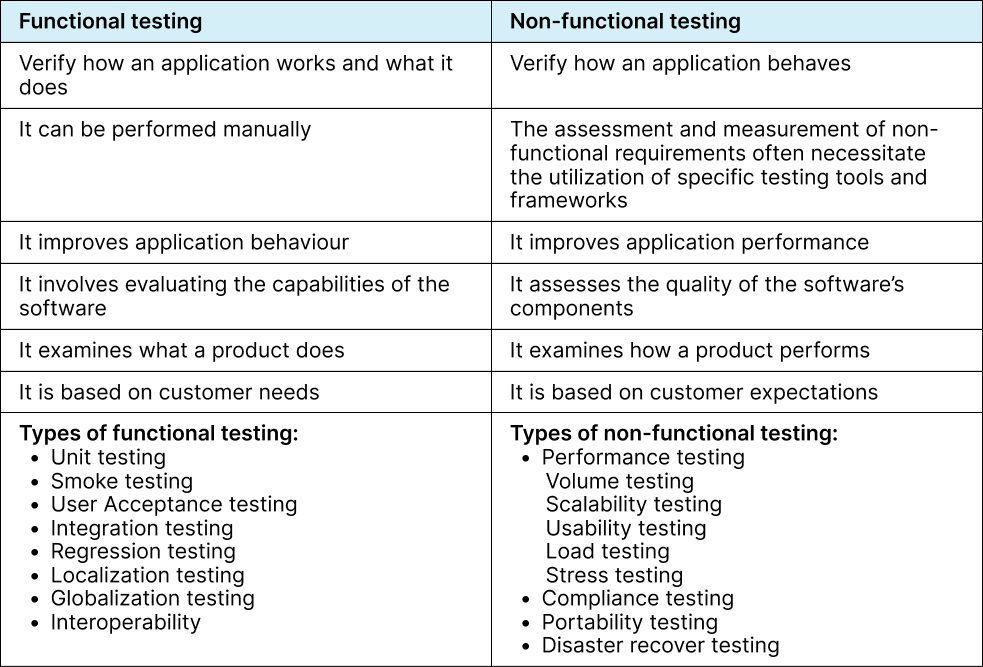
Solution
How can you address this issue?- Develop a well-rounded test strategy containing non-functional and functional testing, ensuring a thorough software evaluation.
- Evaluate the software's performance under diverse loads and conditions to identify and rectify bottlenecks that might impact its functionality.
- Examine the software's user interface and overall user experience, ensuring alignment with usability standards for optimal user satisfaction.
- Conduct security assessments, including vulnerability scanning and penetration testing, to pinpoint and address potential security risks within the software.
Enhancing your testing process to involve both functional and non-functional aspects substantially heightens the quality and reliability of your software, thereby ensuring the success of your software testing goals.
8. Not enhancing testability for your system
The argument that your tested system lacks testability might seem puzzling initially, as, theoretically, you can test anything. However, collaborating with developers to enhance testability can substantially strengthen the robustness of your testing processes.
By “testability,” we mean the ease with which a system or component can be tested. A highly testable software design allows for efficient creation and execution of tests. It involves designing software in a way that makes testing activities more effective, reliable, and comprehensive.
Solution
Here are some recommendations to overcome this challenge:- Integrate QA into the development cycle from the outset. Aligning with development early on is time-efficient, especially when unclear requirements hinder testability.
- Involve QA when choosing new components. Having developers include them ensures that new components are designed with a sense of testability, preventing potential challenges down the road.
- Evaluate new software tools with automated testing in mind. Identifying compatibility issues early on saves considerable effort. Incompatibility can lead to significant challenges, such as the inability to run essential reports.
- Developers should have access to the same automated testing tools as QA to streamline testing processes and conduct unit tests efficiently.
- Advocate for implementing automatic smoke tests on the build server for every application in development. This proactive approach ensures that builds sent to QA are always testable, preventing wasted time and enhancing automation success.
- Encourage developers to use the same testing tools as QA for improved collaboration and minimized test execution time and frustration.
- For baseline configurations, opt for virtual machines over desktop computers. Using virtual machines for testing and QA purposes is cost-effective. It avoids complications that may arise from using personal computers.
- Invert the dynamic by embedding developers within QA teams. This collaborative approach allows developers to gain insights into QA challenges, fostering improved communication and boosting overall team morale.
- Promote pair testing by pairing up developers and testers for joint testing efforts. While primarily beneficial for testers, developers also derive significant advantages from this cooperative approach.
9. Overlooking the importance of keeping previous test results
Holding onto old test results might seem unnecessary when new ones can be generated as needed. However, the oversight lies in underestimating the value of past test results. These earlier results serve as a baseline for comparison, helping quickly pinpoint any changes that might have caused issues in the product.
In case of a problem, reviewing test results from prior runs allows for a speedy identification of the specific alteration that led to the break.
Solution
While you don't need to store every historical result, maintaining records of recent ones proves beneficial for efficient issue resolution and troubleshooting:
- Implement standardized templates for documenting test cases, incorporating essential fields such as preconditions, test steps, expected results, and actual results.
- Ensure test case documentation is under version control to maintain accuracy and relevance.
- Conduct periodic reviews of test case documentation to identify and rectify any gaps or inaccuracies that may arise.
Conclusion
Starting in software testing means encountering many common mistakes, and here, we've just listed a few. Everyone can make an error, often depending on their role and the product they're working on.
The important thing is to avoid making the same mistakes. Learn from them so they don't stop you from trying new things and getting better at what you do. But if you need guidance along the way, partner with the experts at Global App Testing to ensure your success. Contact us to explore our testing services and learn how we can guarantee that your application meets all quality requirements.
Let's schedule a discovery call today to explore how we can assist your business in avoiding common software testing errors.
FAQ
Why is it essential to involve testing early in the software development lifecycle?
Early involvement in testing helps identify and address defects initially, reducing the cost and effort required for later corrections. It promotes a proactive approach to quality assurance.
How does inadequate documentation affect the testing process?
Inadequate documentation can lead to confusion, misunderstandings, and the creation of incomplete or inaccurate test cases. To conduct effective testing, you need to have documentation that is both clear and comprehensive.
How can miscommunication impact the testing process?
Miscommunication between development and testing teams can lead to misunderstandings about requirements and acceptance criteria. As a result, you can have incorrect test cases and a failure to detect crucial defects.
What steps can I take to avoid the most common software testing mistakes?
To avoid the most common software testing mistakes, include the following strategies:
- Comprehensive test planning.
- Thorough training of testing teams.
- The implementation of automated testing where applicable.
- Fostering effective communication and collaboration between development and testing teams.
- Regular reviews and continuous improvement processes.
Keep learning
32 Software testing statistics suitable for your presentation in 2025
6 Android Testing Frameworks You Need To Know About In 2025
14 Software Testing Best Practices To Develop High-Quality Product

